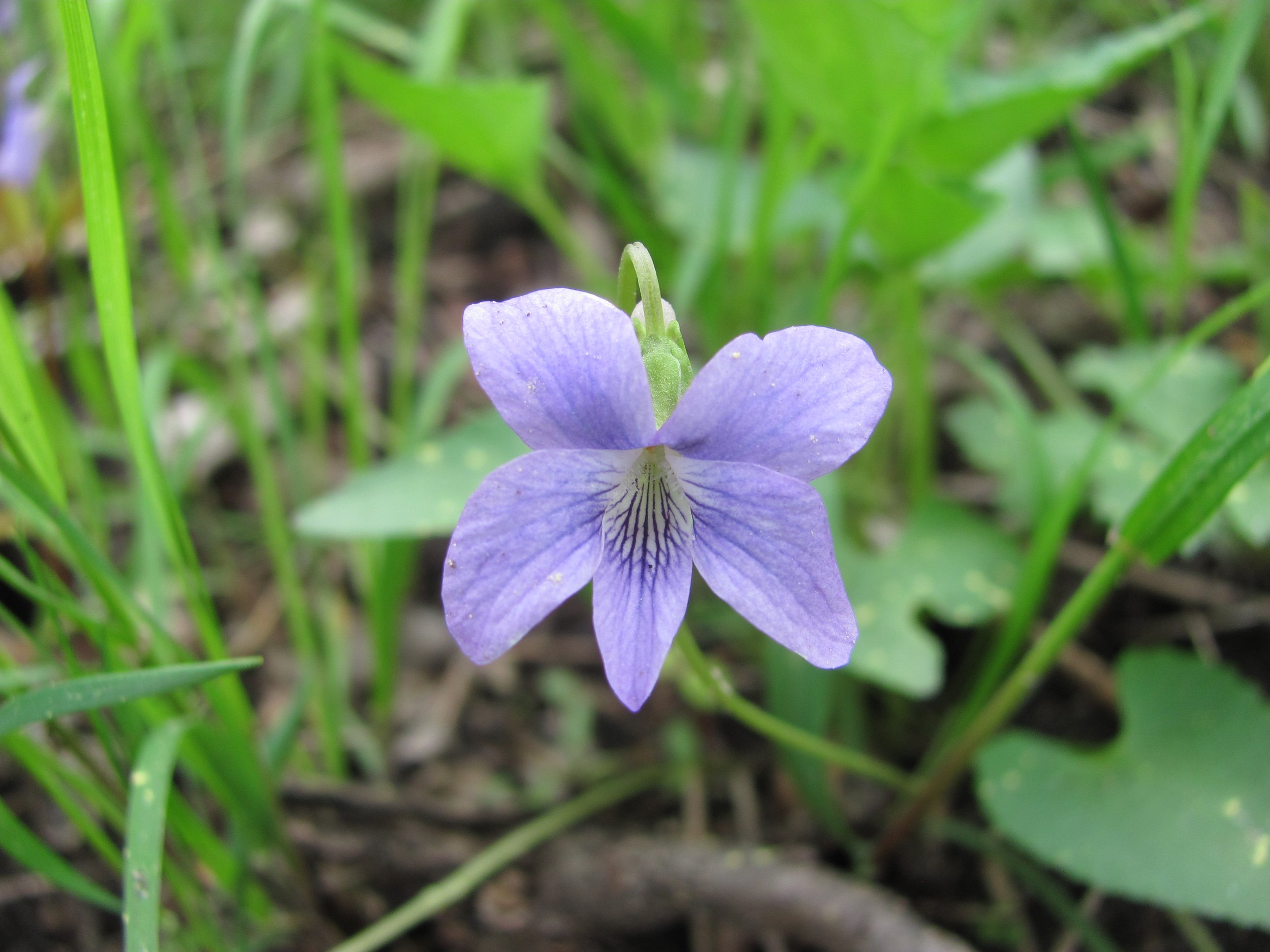Flowers, Fire, and Wildlife
Last December, Nebraska Game and Parks Commission Biologist, Josh Kounovsky, watched 22 acres of oak woodland and prairie burn on Grove Lake Wildlife Management Area (WMA). In fact, he carefully planned and coordinated the burn himself: the burn was a prescribed fire designed with specific goals. One of the overall goals of the fire was to allow the woodland and prairie to function as woodland and prairie again. Great Plains grasslands and oak woodlands evolved with fire. As humans have focused on preventing fires, populations of trees that had been limited by fire, such as eastern redcedar, have increased and reduced the ability for oak woodlands and prairies to sustain themselves and the wildlife that depend on them.
Prescribed fire has restored an area on Grove Lake WMA where oak woodlands and prairie meet. Small cedars killed by the fire are in the foreground.
Over the last few years, WMA managers have stepped in to cut and remove eastern redcedar that had begun taking over the woodland. They have also worked to thin out some of the hackberry, mulberry, and other shade-loving trees that have also started growing more densely in the forest due to the loss of fire. Cedar and other shade-loving trees shade out young oaks and native plants that grow on the forest floor. Young oaks cannot replace dying oaks where cedar and other trees have crowded into the forest. Cedar was also spreading from the woodlands into the surrounding prairie on the WMA. With the loss of forest plants, young oaks, and native grasslands, Grove Lake WMA was losing quality habitat for a diversity of wildlife, including the turkey, deer, quail, and grouse that the WMA was created to support.
Prairie violet (Viola pedatifida, left) is blooming in the prairie openings and downy blue violet (Viola sororia, right) is blooming in the woodland. As described in a previous post, prairie violet is especially important for the regal fritillary butterfly which feeds only on violets during the caterpillar stage.
The initial, costly removal of many cedars from the woodlands and prairie allowed biologists to use prescribed fire as a more efficient long-term management tool. Thanks to Kounovsky and his experienced burn crew, the fire was a success, killing small cedars that had sprouted since cedar tree removal. Fire also made space for flowering plants that wildlife needs by clearing some of the dense leaf litter from the forest floor and the dense, dead grass in the prairies. The result is a rejuvenated oak woodland and tallgrass prairie with many wildflowers. Wildflowers provide food and cover for wildlife and support insects that anchor the food web. Insects are an especially important food for game bird and songbird chicks.
Hairy puccoon (Lithospermum caroliniense, left) and fringed puccoon (Lithospermum incisum, right) blooming on prairie restored by prescribed fire. Puccoon seeds are a nutritious food for grassland birds.
Fire is a tool that will ensure Grove Lake WMA will provide high quality hunting opportunities for future generations of hunters. Prescribed fire will benefit many non-game animals and plants as well. As spring arrives, we are excited to see what is blooming on the burn. We hope you enjoy these photos of mid-May blooms!
White-eyed grass (Sisyrinchium campestre) blooming in the prairie after prescribed fire. This delicate wildflower is not actually a grass.
Violet wood sorrel (Oxalis violacea) is especially abundant along woodland edges in the burn area.
Groundsel (Senecio integerrimus), also known as lambstongue ragwort, growing in restored woodland this May.
Author: Jen Corman, Coordinating Wildlife Biologist, Northern Prairies Land Trust










